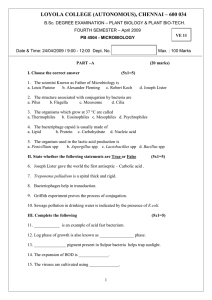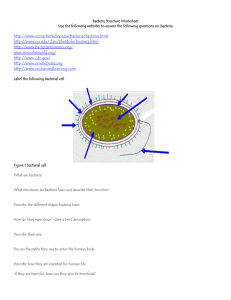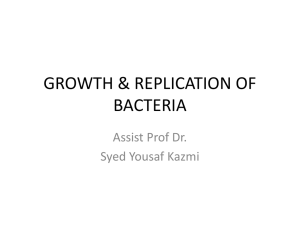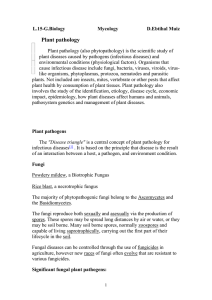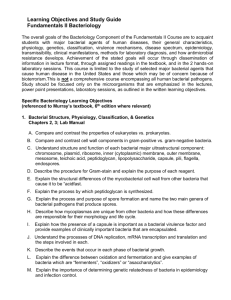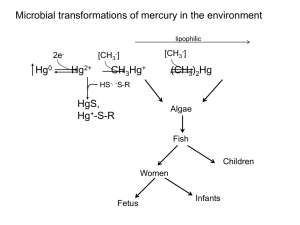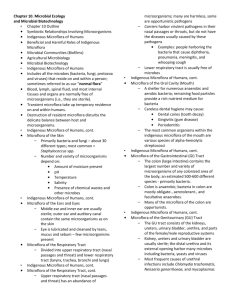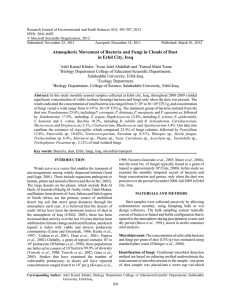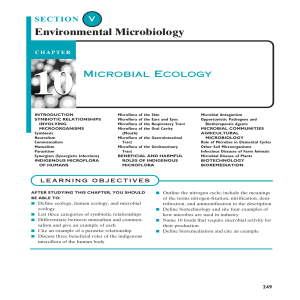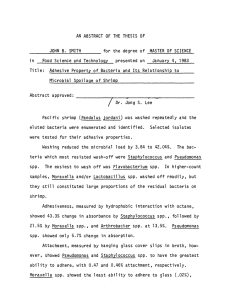Bacterial Growth Answer Sheet
advertisement
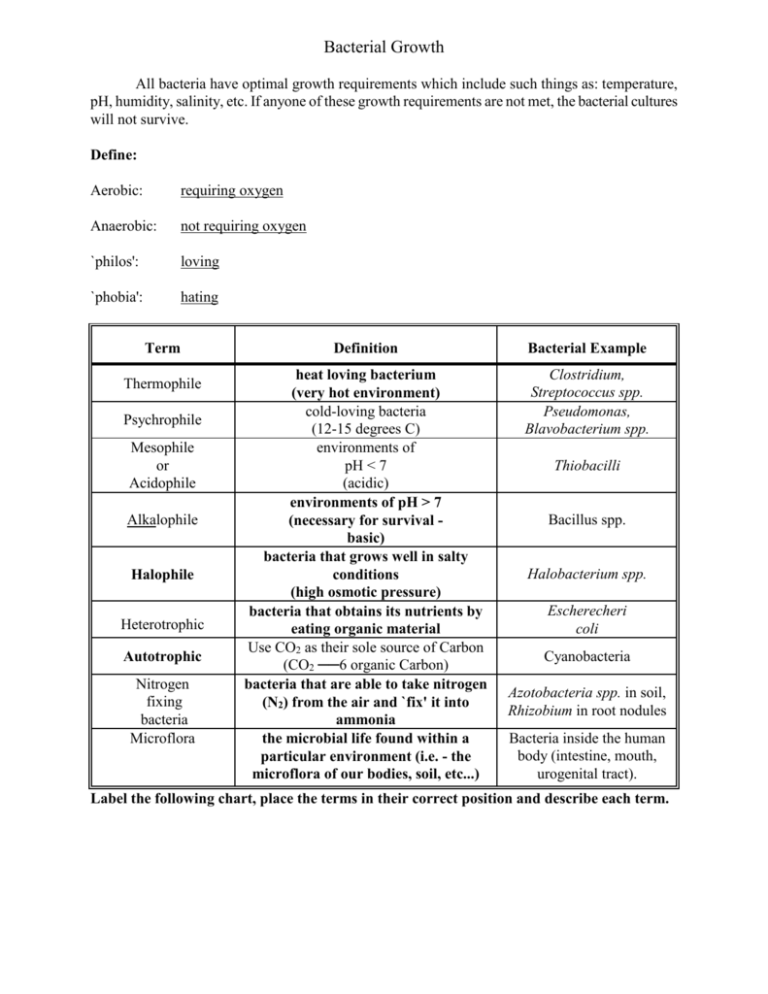
Bacterial Growth All bacteria have optimal growth requirements which include such things as: temperature, pH, humidity, salinity, etc. If anyone of these growth requirements are not met, the bacterial cultures will not survive. Define: Aerobic: requiring oxygen Anaerobic: not requiring oxygen `philos': loving `phobia': hating Term Thermophile Psychrophile Mesophile or Acidophile Alkalophile Halophile Heterotrophic Autotrophic Nitrogen fixing bacteria Microflora Definition Bacterial Example heat loving bacterium (very hot environment) cold-loving bacteria (12-15 degrees C) environments of pH < 7 (acidic) environments of pH > 7 (necessary for survival basic) bacteria that grows well in salty conditions (high osmotic pressure) bacteria that obtains its nutrients by eating organic material Use CO2 as their sole source of Carbon (CO2 ──6 organic Carbon) bacteria that are able to take nitrogen (N2) from the air and `fix' it into ammonia the microbial life found within a particular environment (i.e. - the microflora of our bodies, soil, etc...) Clostridium, Streptococcus spp. Pseudomonas, Blavobacterium spp. Thiobacilli Bacillus spp. Halobacterium spp. Escherecheri coli Cyanobacteria Azotobacteria spp. in soil, Rhizobium in root nodules Bacteria inside the human body (intestine, mouth, urogenital tract). Label the following chart, place the terms in their correct position and describe each term. Growth Curve 10.0 9.0 log10 8.0 viable 7.0 Viable count 6.0 5.0 Time lag phase: bacteria adapt themselves to their new environment growth phase: bacteria count increases in a linear fashion stationary phase: growth of bacteria slows down due to various changes [oxygen, pH] death phase: culture starts to die off - waste products build up and nutrients become scarce doubling time: time it takes for the population to double in number. This is a characteristic of a given bacterial strain when it is grown in a standardmedium


